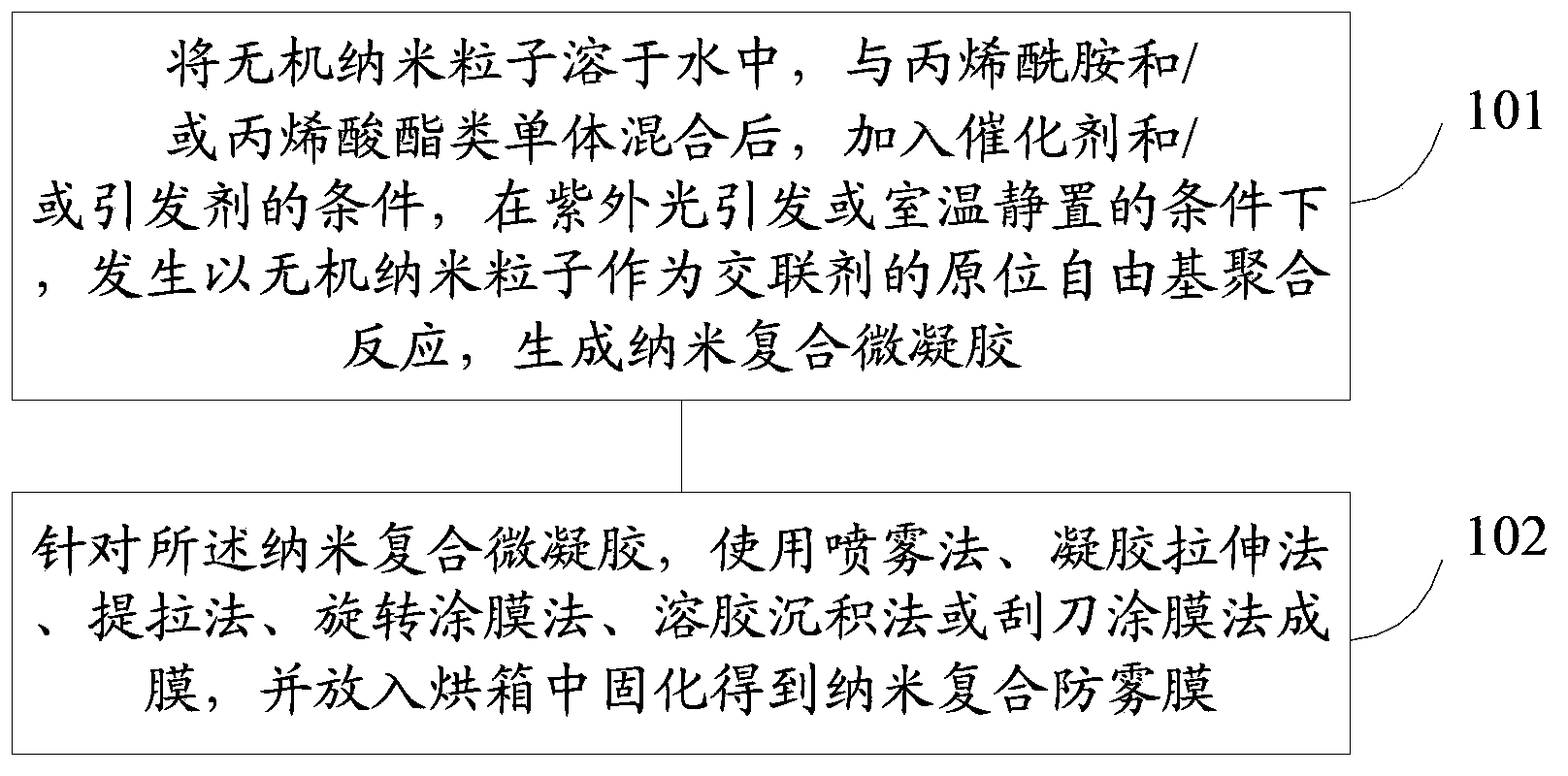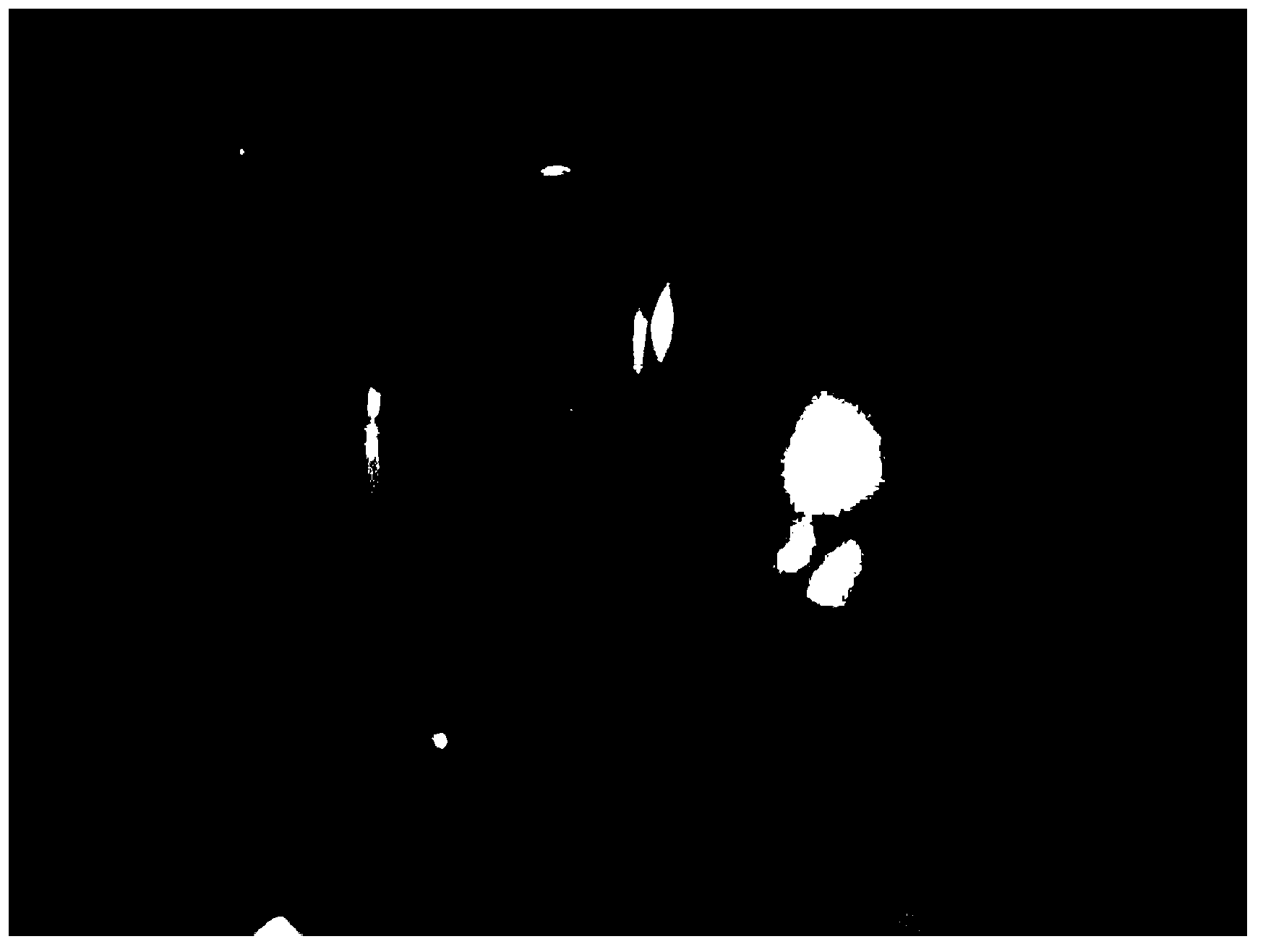Preparation method for nanometer composite anti-fogging film
A nano-composite and anti-fogging film technology is applied in the field of preparation of nano-composite anti-fogging films, which can solve problems such as the difficulty of adhesion between coatings and substrates, and achieve good practical application value, good surface smoothness, and good water resistance. Effect
- Summary
- Abstract
- Description
- Claims
- Application Information
AI Technical Summary
Problems solved by technology
Method used
Image
Examples
preparation example Construction
[0032] refer to figure 1 ,show figure 1 It is a flow chart of the steps of the embodiment of the preparation method of a nanocomposite anti-fog film of the present application, which may specifically include the following steps:
[0033] Step 101, dissolving inorganic nanoparticles in water, mixing them with acrylamide and / or acrylate monomers, adding catalysts and / or initiators, under the conditions of ultraviolet light triggering or standing at room temperature, the formation of inorganic In situ radical polymerization of nanoparticles as cross-linking agents to generate nanocomposite microgels.
[0034] In the present application, the inorganic nanoparticles may be any one or a mixture of clay, silicon dioxide, titanium dioxide, aluminum oxide, zinc oxide, magnesium oxide or zirconium oxide.
[0035] Preferably, when the inorganic nanoparticles are silicon dioxide or titanium dioxide, the particle diameter of the inorganic nanoparticles may be 2-40 nm.
[0036] Since thi...
Embodiment 1
[0061] Embodiment 1, join 0.8g clay in the 100ml vial that 50ml ultrapure water is housed, pass nitrogen gas under the condition of magnetic stirring for 15 minutes, add 0.505g N-methylolacrylamide, stir under nitrogen condition for 15 minutes, then put N 2 Move to the liquid surface and continue to pass N 2 After stirring at a slow speed for 15 minutes, 1 ml of 2% sodium thiosulfate and 20 μl of azobisisobutyronitrile were added, sealed and left to stand for 2 hours to obtain a clay nanocomposite microgel.
[0062] Put the glass substrate into a 90mm glass Petri dish, add 15ml of the prepared clay nanocomposite microgel, put it horizontally in an oven at 55°C for 24 hours, and use the self-deposition method to prepare an anti-fog film; at the same time, deposit the sol on On the lens of the swimming goggles, put the swimming goggles on the water vapor at 80°C to test the anti-fog effect. figure 2 It is the anti-fog effect diagram of the anti-fog film prepared in Example 1....
Embodiment 2
[0071] Example 2: Add 0.8g of clay into a 100ml vial containing 50ml of ultrapure water, pass nitrogen for 15 minutes under magnetic stirring, add 0.36g of acrylamide, stir for 15 minutes under nitrogen, and then add N 2 Move to the liquid surface and continue to pass N 2 After stirring slowly for 15 minutes, 1ml of potassium persulfate with a concentration of 2% and 20μl of N,N,NˊNˊ-tetramethylethylenediamine were added, sealed and left for 2 hours to obtain a clay nanocomposite microgel.
[0072] Put the glass substrate into a 90mm glass Petri dish, add 15ml of the prepared clay nanocomposite microgel, put it horizontally in an oven at 55°C for 24 hours, and use the auto-deposition method to prepare an anti-fog film.
[0073] The performance parameters of the anti-fog film prepared in Example 2 are as follows:
[0074] Anti-fog: 8 minutes
[0075] Hardness: 2H
[0076] Adhesion: >98%
[0077] Light transmittance: qualified
[0078] Contact angle: 41°
PUM
| Property | Measurement | Unit |
|---|---|---|
| particle diameter | aaaaa | aaaaa |
| concentration | aaaaa | aaaaa |
| hardness | aaaaa | aaaaa |
Abstract
Description
Claims
Application Information
 Login to View More
Login to View More - R&D
- Intellectual Property
- Life Sciences
- Materials
- Tech Scout
- Unparalleled Data Quality
- Higher Quality Content
- 60% Fewer Hallucinations
Browse by: Latest US Patents, China's latest patents, Technical Efficacy Thesaurus, Application Domain, Technology Topic, Popular Technical Reports.
© 2025 PatSnap. All rights reserved.Legal|Privacy policy|Modern Slavery Act Transparency Statement|Sitemap|About US| Contact US: help@patsnap.com



